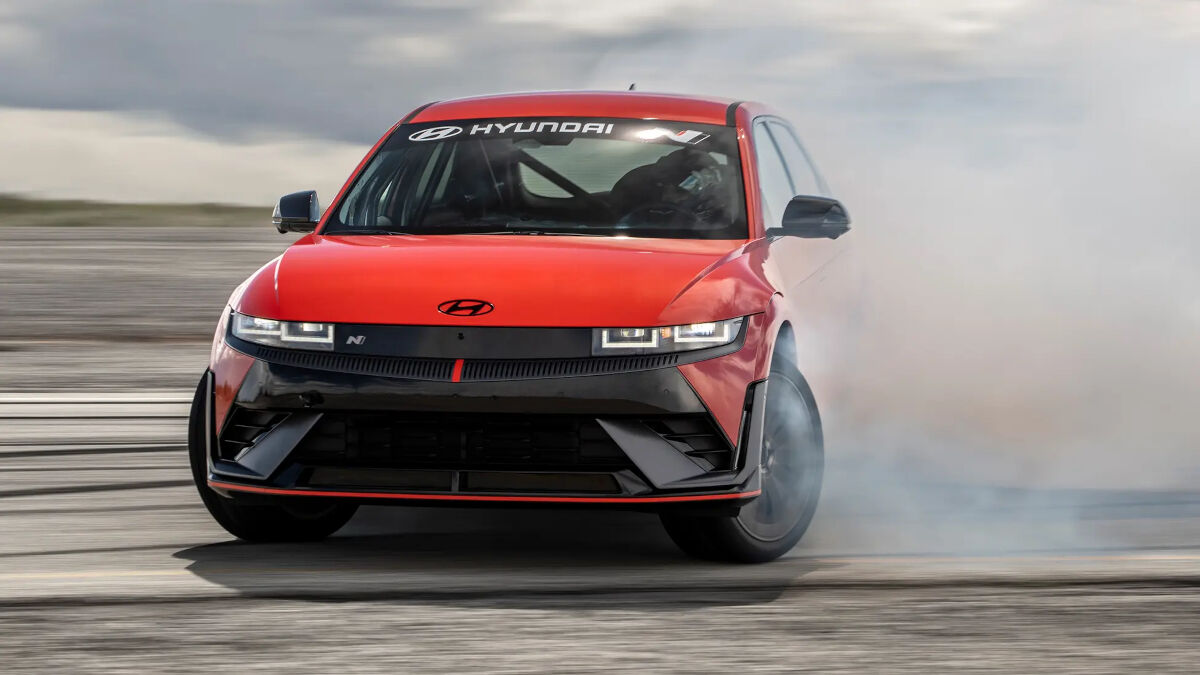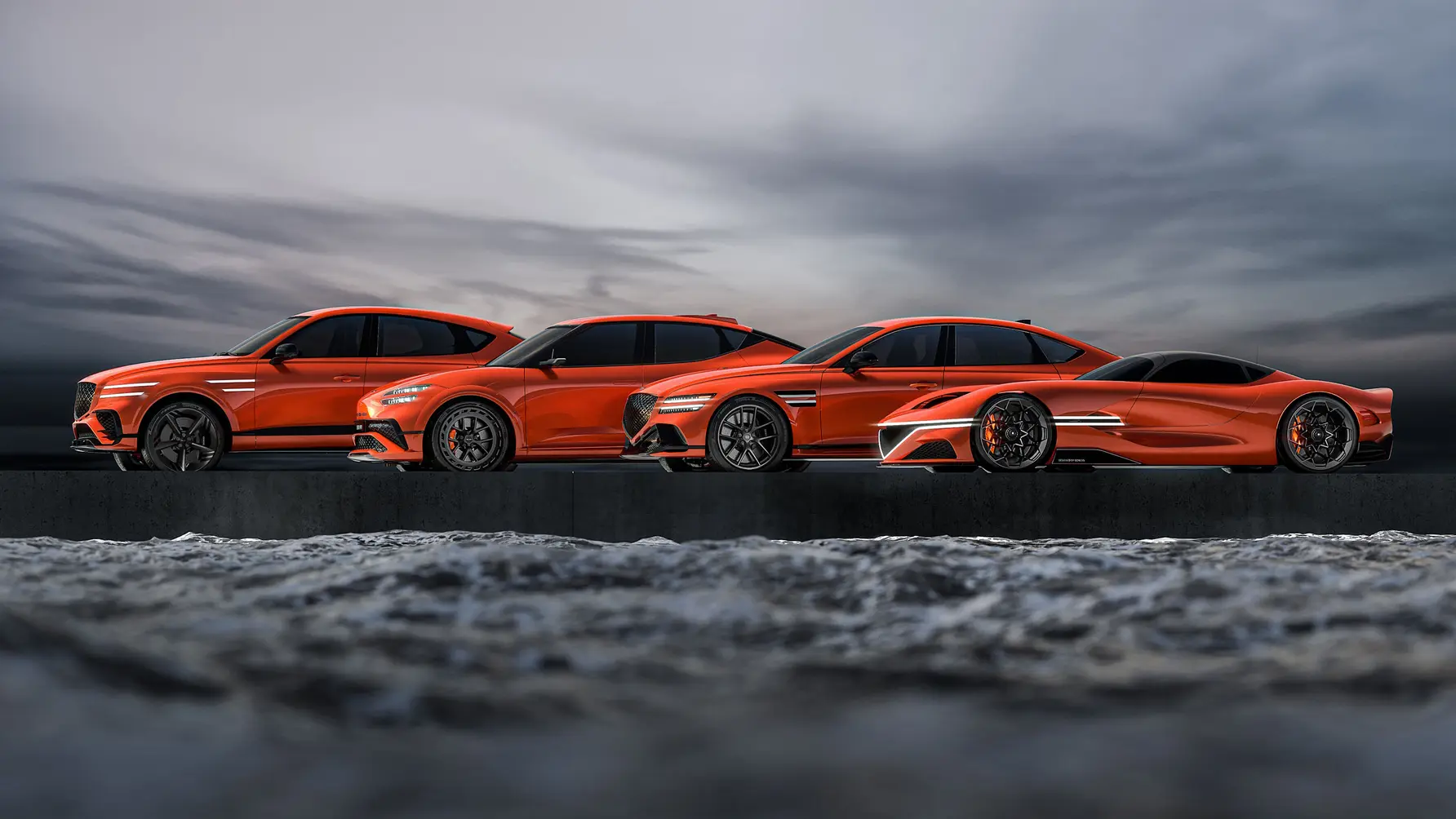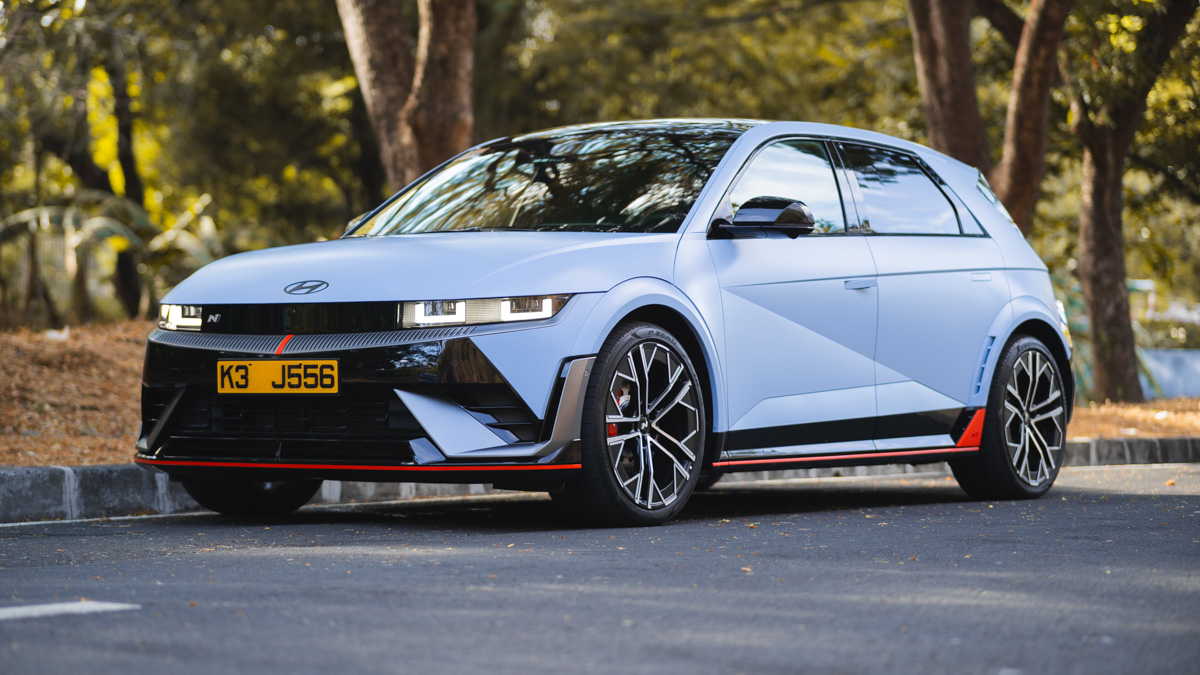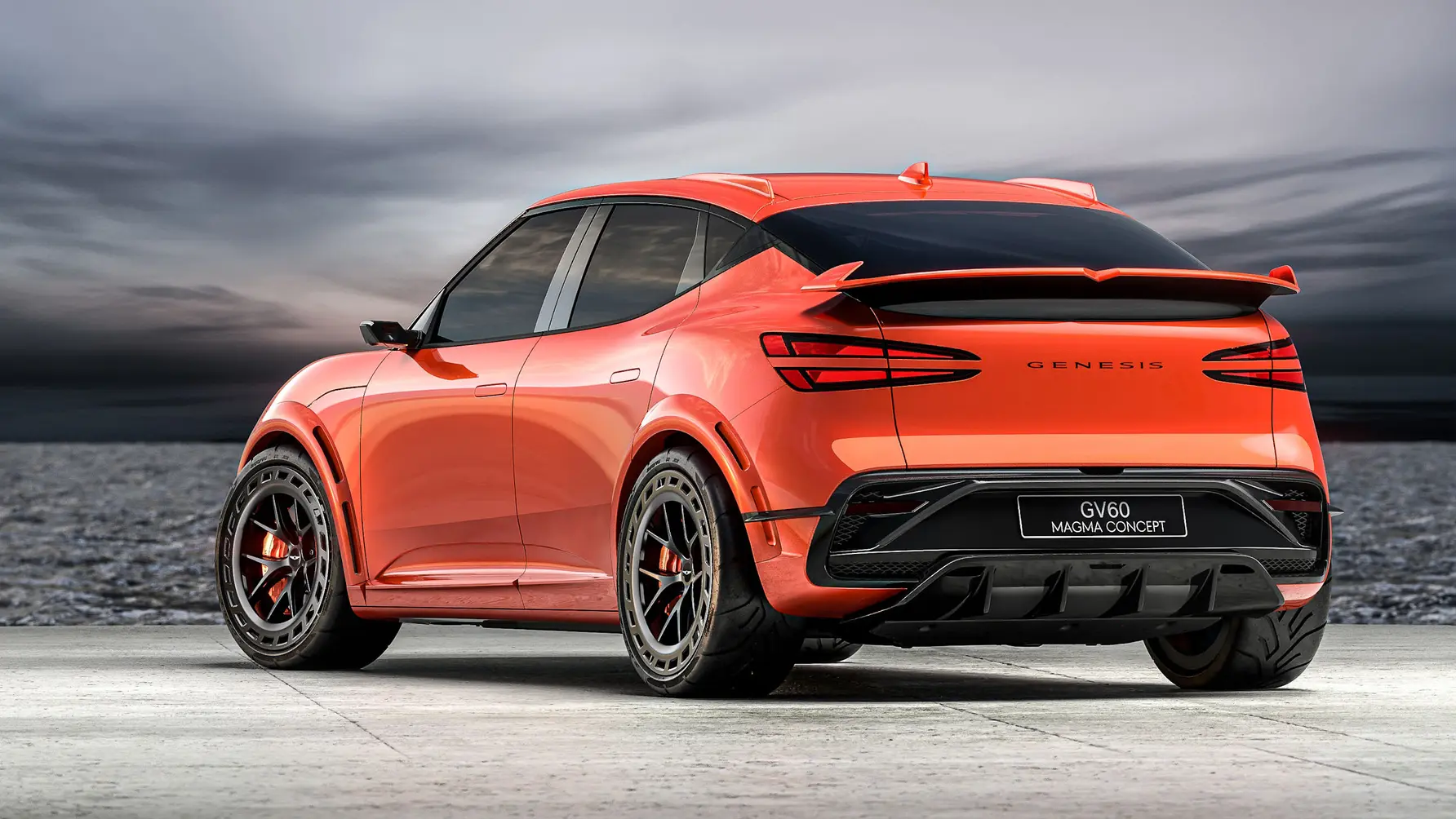You can fundamentally change a car with software,’ says Hyundai’s tech boss
A Genesis based on the Ioniq 5 N will feel very different
PHOTO: HYUNDAI
CAR BRANDS IN THIS ARTICLE

Hyundai
The performance sub-brand of Genesis, called Magma, is getting closer. The GV60 Magma goes on sale in Korea late this year—Genesis promised us as much when the concept version ran up the Goodwood hill last summer. We’ll see photos in November.
Next year, there will be more Magma road cars, plus a V8 hybrid Le Mans hypercar that’s already testing.

PHOTO BY GENESIS

PHOTO BY HYUNDAI
Given that Genesis was spun out of Hyundai, it’s no surprise the GV60 Magma will use much tech from parent company Hyundai’s Ioniq 5 N. So, expect an electric 600hp and torque that’s vectored in the direction of traction or hilarity at the driver’s will. But don’t expect it to feel quite like the Hyundai.
OTHER STORIES YOU MIGHT HAVE MISSED:
Ford honors the Bronco’s 60th year with a two-seat manual roadster concept
The Nissan Xterra and Pathfinder could return in 2028 as hybrids
Top Gear spoke with Tyrone Johnson, head of the Hyundai Motor Europe Technical Center, a 400-strong, €150-million outfit near Frankfurt, Germany. HMETC will be responsible for the development and tuning of all Magma cars after the GV60, which was done in Korea. Johnson, meanwhile, was head of testing for the Ioniq 5 N and had program responsibility for the last Focus RS, so we can take that as good news.

PHOTO BY CHARLES BANAAG
He says the first of those German-developed Magmas will appear in 2027 and that the changes are “much more complex” than for the GV60.
Magma has also shown concepts for its version of the America-friendly GV80 SUV. There was also a partially Magma-ized version of the G80 sedan for the Middle East, very much a gasoline-swilling region. Magma won’t, it seems, be solely about EVs.
Manfred Harrer, head of the Hyundai Group’s development center in Korea, said: "We are developing an EV-focused platform dedicated to Genesis, improving driving range. Furthermore, to overcome the EV chasm and respond to market conditions, we have begun upgrading this platform to make it adaptable to future tech like EREVs.” With an extended-range EV, a gasoline engine powers a generator to juice up the electric system over long distances.

PHOTO BY GENESIS
How will Magma differ from Ioniq N? Johnson said: “N is the ‘corner rascal.’ A Magma isn’t about the track, although it will be track-capable. It’s a more sophisticated, luxurious driving machine.
“It has to be about power, and changes to motors and engines are important. But it doesn’t have to be the most powerful [in its class]. It needs sufficient power. Weight is always important. It’s independent of luxury. You have to have weight in focus, partly because range is important and you get diminishing returns with a larger, heavier battery.”
He said it’s not all that relevant that Magma and N share batteries or motors or suspension hardware. “I’ve done 40 years in this industry. It was all mechanical engineering. Now it’s all software. You can fundamentally change a car with software.”


